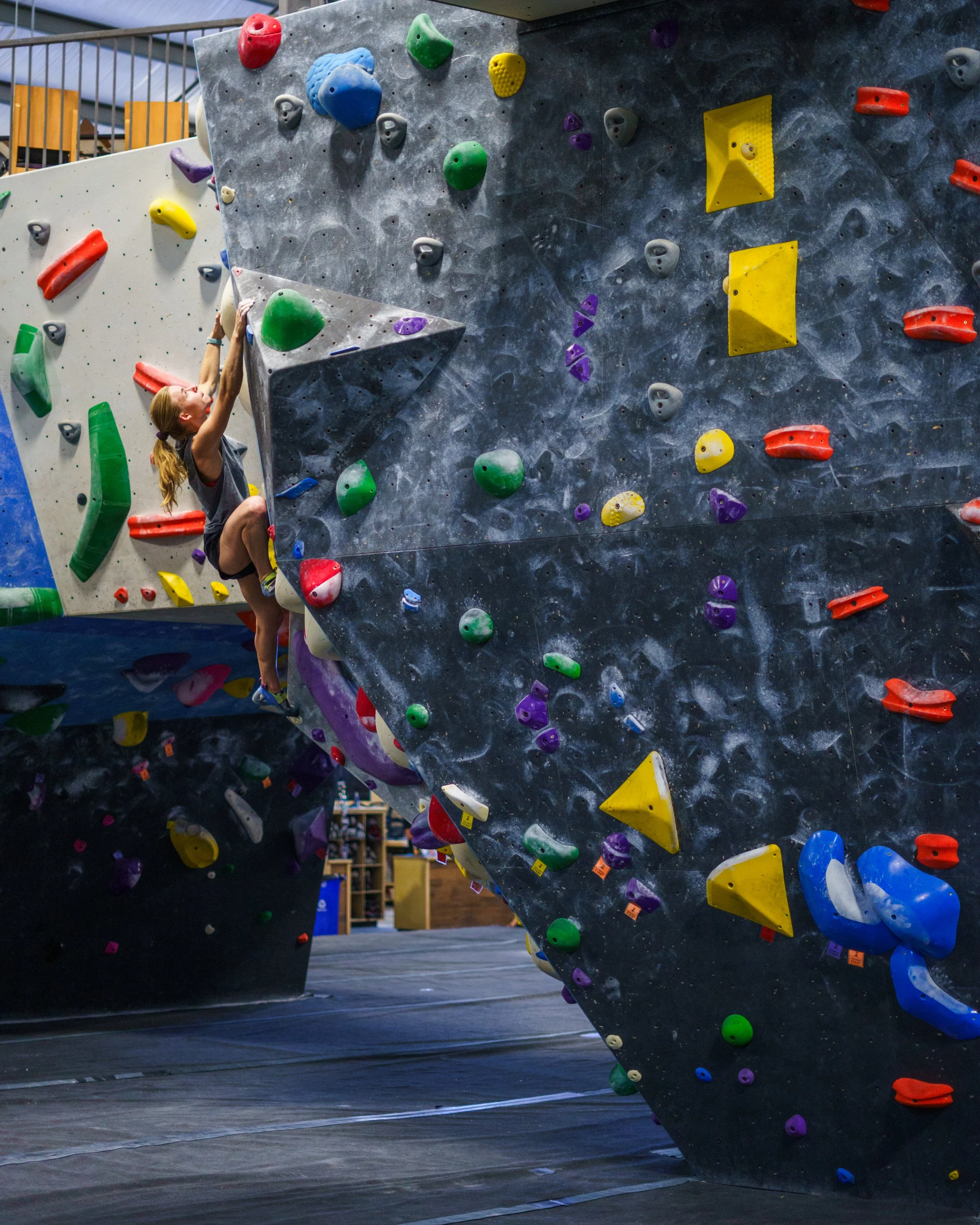All About Indoor Climbing
the basics for new climbers
There’s a lot that goes into indoor climbing, and we know that it can be overwhelming to figure out at first, so we put together this guide for anyone looking to get started in the great indoors.
There are no age or weight restrictions to try out climbing. We have a variety of equipment that can fit all shapes and sizes. If you can climb a ladder, you can climb at Peak Experiences!
At Peak, we do not require a certification to climb, but our roped-climbing belay systems require certifications. We can provide you with both instruction and any necessary certifications!
Here at Peak Experiences, we offer a few types of climbing
Bouldering, which is climbing on our shorter walls over padded flooring. Bouldering does not require a harness or a rope.
Roped climbing, which is climbing our taller walls while tied into a harness and another individual takes up the rope slack as you climb, catches you if you fall, and lowers you to the ground.
Auto belay, which is climbing our taller walls, while attached to a device that will catch you and lower you to the ground.
Bouldering
We offer bouldering at both of our locations, Peak Midlo and Peak RVA, though the areas look a little different.
To ‘Start’ a “boulder problem”, you look for the tag(s) that indicate the grade of a boulder. There may be more than one start hold and tag for that route, and if that is the case, one hand must be on each hold. If there is just one, both hands must be on the start hold. From there you follow the holds of the same color to the top. The ‘top’ of a boulder at Peak RVA is the highest hold of that boulder problem. At Peak Midlo, it’s the numbered section of the top of the wall, indicated on the start tag(s) of that boulder problem.
The only equipment you need to boulder is climbing shoes, which we have available to rent in a wide range of sizes, but if you’d like to climb a little higher, we have hundreds of rope routes to climb, and harnesses to rent as well
Roped Climbing
Roped climbing refers to routes on the tall walls in the gym, for which climbers must use a harness and a rope system to ascend the wall. Between our two locations, we have many dozens of climbs of a variety of difficulties available for you to try! First time climbers will likely be climbing routes using our double-wrapped top-rope system, in which the climber’s harness is attached to a rope that is wrapped twice around a reinforced steel ‘belay bar’ at the top of the route.
There’s also an advanced type of climbing called Lead Climbing, or Sport Climbing, where the climber ascends the wall with a rope attached to their harness, and the climber clips the rope into bolts that are in the wall along the route.
We offer a Learn the Ropes class if you’d like to learn the safety systems for roped climbing, but no experience is required if you’d like to use our auto-belay systems.
Auto Belay Devices
Auto Belays are devices that are attached at the top of the route and clipped into a climber’s harness. When a climber falls while climbing a route, the device is able to ‘catch’ them gently and lower them slowly to the ground.
They’re awesome for many reasons! You don’t need a climbing partner to use an auto-belay, and you don’t need to know how to tie a knot or use a belay device. This makes them perfect for first time climbers, but experienced climbers love them too. You can repeat routes as many times in a row as you’d like, which helps to build endurance and strength.
Auto-belay sound good for you? We require those using the Auto-Belay device to watch a video and pass a test for certification. Click here to watch our Auto Belay Video and learn more!


